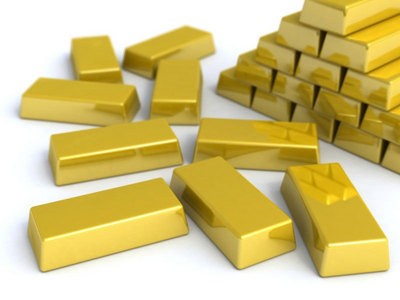Commodity ETFs
Post on: 8 Май, 2015 No Comment

Why Invest in Silver?
We live in economically uncertain times. Many investors are worried that their investments, and especially long term retirement investments, will be eroded by inflation and dollar devaluation. Commodities offer the ability to add protection to these future possibilities. Oil. natural gas. agriculture. and other precious metals. such as gold and platinum, are all good inflation hedge options for long term retirement portfolios. Silver is another example of this type of hedge, and adds a balance to other commodities investments.
Silver, often thought of as ‘poor man’s gold,’ has many uses in today’s economy. Because of silver’s industrial uses, it has demand beyond that of a currency hedge. Gold lacks this industrial demand. Over 40% of silver is used for industrial purposes ranging from photography to CDs and batteries. Silver is being implemented into some of the most high tech applications that will continue to drive this metal’s demand into the future. One example is the solar panel industry. Silver is use in 90% of all photovoltaic cells used in solar panels. Because silver is not just tied to one sector of industry (like copper to housing, platinum to cars, and gold to electronics) silver is more diverse and more able to withstand industrial slumps (like the housing bust we are going through).
Silver is a historically volatile commodity. Looking back just a few years at the range from 2007-2009 saw silver prices jumping from $13 per ounce to $21 per ounce, and then silver lost almost 50% of its value over just 7 months, only to gain most of it back over the next year. Since 2009, silver has systematically risen to a high of $46.88 per ounce, and sits today at around $33. An uncertain economic future could spell more volatility in silver going forward.
Is ‘poor man’s gold’ right for you? Are you asking yourself, why should I invest in silver? If you are looking to add diversity to your retirement portfolio, as well as dollar devaluation and inflation protection, silver is a good piece to add. The keyword here is diversity. Gold, copper. and silver make up a very well diversified precious metals commodity hedge.
How to Invest in Silver
Trading silver, or any precious metal for that matter, the traditional way meant gaining access to a pit trader who would then allocate money towards the commodity. Mutual funds that have positions in silver lack transparency and are riddled with fees. ETFs allow you the ability to bypass brokers and pit traders altogether, as well as increase the transparency in your investments.
Note: Exchange-traded notes (ETNs) are another vehicle to gaining silver exposure, but involve different credit-associated risks.
There are two categories of silver ETF investments:
Investing directly in silver utilizes ETFs that track an index, silver contract futures, or physical silver holdings. This is what commodities investing is all about. Indirect silver investing involves ETFs or ETNs that buy equity in companies that deal with silver production and supply, namely the mining industry. Since the revenues of these companies are directly related to the price of silver, it is a good way to indirectly hold silver.
Below is a breakdown of the different types of silver ETFs (or silver ETNs) available.
Index Funds
Index ETFs are funds that track a specific index. For example, as the Deutsche Bank Liquid Commodity Index goes up or down, so do specific ETFs that track this index.
Silver Futures Funds
Some silver ETFs trade in futures contracts. The silver ETF or ETN purchases the front month futures contract on the NYMEX, for example. When the front month is within 2 weeks of expiration, they will ‘roll’ the contract into the next month (or sell the position from the front month and buy positions in the next month). This ensures that your position in silver will always be ‘long.’
Leveraged Silver Funds
Leveraging is one of the great tools that often comes with ETF or ETN investing. There are many funds that attempt to double, triple, or quadruple your return. They achieve this through margin investing. For example, the ProShares Ultra Silver ETF (AGQ) is leveraged 2x in an attempt to double your return on silver prices. It is not uncommon to find a 2x silver ETF or 3x silver ETF among the different leveraged silver ETF options on the market.
Inverse Silver Funds
What if you think that the price of silver has over-reached, and you want to bet against the price of silver and make money on it? There are two ways to go about doing this. You can short a silver index ETF or ETN (an ETF short silver, silver short ETF, or double short silver ETF option), which would mean that as the index price decreases, you can sell the stock short and make a profit. There are also inverse silver ETFs and ETNs available. These funds are basically doing the short selling for you, as they track the inverse of the index fund or price of the commodity. Leveraging can also be applied to this investing strategy (for example, you could buy a fund that tracks the inverse of the silver price or index, but triples the return of the short position).
Trading Silver ETF Options
Buying or selling call or put silver options is another method for trading these funds. This is a great way to hedge against a future spike or severe drop in silver price, since you don’t actually have to allocate money until the strike price has been met.
Editor’s note – leveraged investing, margin investing, and options investing include substantially increased risk. Be sure you do your homework and understand exactly how you are allocating your money.
Gold ETF List Of Options
iShares Silver Trust ETF (SLV)
Founded in 2006, SLV seeks to reflect the price of silver. SLV is intended to constitute a simple and cost-effective means of making an investment similar to an investment in physical silver. Although the fund is not the exact equivalent of an investment in silver, they provide investors with an alternative that allows a level of participation in the silver market through the securities market.
Physical Swiss Physical Silver Shares Trust ETF (SIVR)
Founded in 2009, SIVR offers you the opportunity to invest in a silver ETF that has physical backing, or in other words, the fund actually physically holds silver. SIVR seeks to replicate the price of silver bullion. The shares are backed by physical allocated silver bullion held by the custodian. All physical silver held conforms to the London Bullion Market Associations rules for good delivery. Because SIVR is a physical silver ETF, they are very transparent in their holdings, as they publish them regularly on their site.
PowerShares DB Silver Fund (DBS)
Founded in 2007, DBS tracks the price and yield performance of the Deutsche Bank Liquid Commodity Index Optimum Yield Silver Excess Return. The index is a rules-based index composed of futures contracts on silver and is intended to reflect the performance of silver. DBS is an example of an index ETF, and the index fund utilizes a futures-based investing strategy rather than holding physical silver bullion.
E-TRACS USB Bloomberg Commodity (USV)

USV, founded in 2008, tracks the price and performance yield of the UBS Bloomberg CMCI Silver Total Return index. The fund is designed to be representative of the entire liquid forward curve of the silver contracts. The index measures the collateralized returns from a basket of silver futures contracts. It is comprised of the silver futures contracts included in the CMCI with five target maturities.
ProShares Ultra Silver (AGQ)
Also founded in 2008, AGQ seeks to provide daily investment results that correspond to twice (200%) the daily performance of silver bullion as measured by the U.S. Dollar fixing price for delivery in London. The fund invests in any one of or combinations of the financial instruments (swap agreement, futures contracts, forward contracts, option contracts) with respect to the applicable fund’s benchmark to the extent determined appropriate by the Sponsor. AGQ is an example of a leveraged 2x silver ETF.
ProShares UltraShort Silver (ZSL)
ZSL, also founded in 2008, seeks to provide daily investment results that correspond to twice (200%) the inverse (opposite) of the daily performance of silver bullion as measured by the U.S. Dollar fixing price for delivery in London. The fund invests in any one of or combinations of the financial instruments (swap agreement, futures contracts, forward contracts, option contracts) with respect to the applicable fund’s benchmark to the extent determined appropriate by the Sponsor. ZSL is the exact opposite of AGQ and is an example of an inverse leveraged silver ETF.
PowerShares DB Precious Metals ETF (DBP)
Founded in 2007, DBP tracks the price and yield performance of the Deutsche Bank Liquid Commodity Index Optimum Yield Precious Metals Excess Return. The index is a rules-based index composed of futures contracts on two of the most important precious metals gold and silver. The index is intended to reflect the performance of the precious metals sector. DBP is an ETF option for an investor looking to add both gold and silver exposure to their portfolio.
iPath DJ-UBS Precious Metals Sub-Index ETN (JJP)
Another precious metals investment option founded in 2008, JJP seeks tracks the Dow Jones-UBS Precious Metals Total Return Sub-Index. The index is intended to reflect the returns that are potentially available through an unleveraged investment in gold and silver futures contracts as well as the rate of interest that could be earned on cash collateral invested in specified Treasury Bills. This is an ETN option, and has credit-associated risks. If you are looking for a combination of gold and silver exposure, JJP is an option for you.
In Conclusion
Adding commodity exposure to your portfolio through ETF or ETN investing is a great way to add diversity, as well as inflation protection. With the many advantages of ETF trading (intraday investing, low cost, transparency of assets), you can increase your bottom line with respects to investment results.
Silver, often called poor mans gold, has become a valued asset in recent years, and has proven to be an effective inflation hedge. While its price is quite volatile, silver offers a good balance to other precious metals such as gold, copper, and platinum. If you are looking for ways to hedge against inflation and devaluation of the dollar, utilizing a silver ETF or ETN to gain exposure to this commodity is a great option.
Disclosure
I have no positions in any ETFs or ETNs mentioned, and no plans to initiate any positions within the next 72 hours.
Disclaimer: Please remember to do your own research prior to making any investment decisions. This article is not a recommendation to buy or sell any securities or stocks, and is the opinion of the author.














